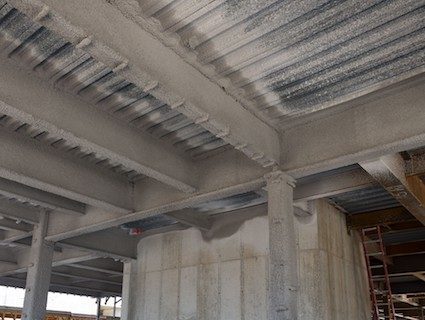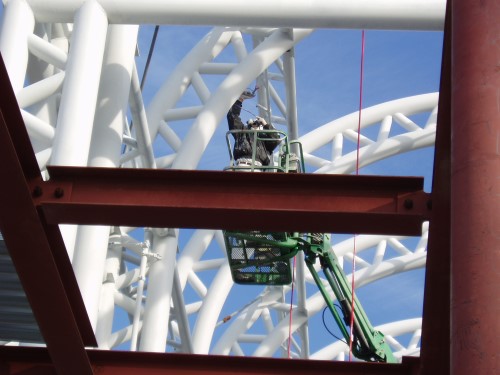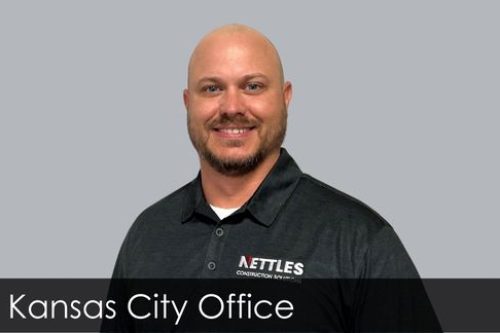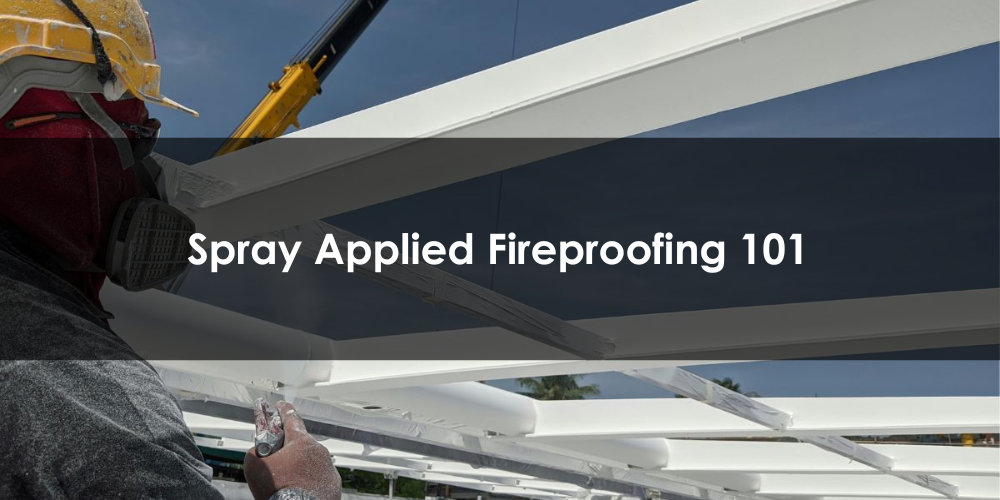Spray Applied Fireproofing
What is spray applied fireproofing?
Spray applied fireproofing, also called sprayed fireproofing or sprayed fire resistive materials (SFRM), is a passive fire protection system that reduces the rate of temperature increase in concrete or steel during a fire, protecting occupants and prolonging the building’s structural integrity.
There are 2 types of spray applied fireproofing: cementitious fireproofing and intumescent paint. Cementitious fireproofing is a mix of either gypsum or portland cement that hardens into a foam-like texture with the insulating properties of cement. Intumescent fireproofing looks like a layer of paint when applied, but swells to many times its original thickness in fire situations, insulating and protecting structural steel members from the heat.

What buildings require spray applied fireproofing?
Most commercial and residential buildings, including schools, hotels, apartments, hospitals, and stores, require specific fire ratings designed to ensure the safety of occupants and infrastructure. Fire ratings are governed by international standards such as the International Business Code, and can vary based on occupancy level, building size, and location.
Specific building elements may be subject to different fire ratings, including walls, doors, windows, ceilings, and structural components. Reference IBC tables 601 and 602 for the required fire ratings.
Want to learn more?
Read our comprehensive spray applied fireproofing buyer’s guide to learn about the advantages of each fireproofing type, how it’s installed, and what you should know before specifying.
Why choose Nettles as your spray applied fireproofing contractor?
At Nettles, we have years of experience with both cementitious and intumescent fireproofing. We mix the product on-site and spray it using specialized mixing and pumping equipment. Our pump operators and spray technicians are knowledgeable and certified–and we are proud members of the National Fireproofing Contractors Association.
Beyond our specific expertise, we pride ourselves on customer service, clear communication, and strict adherence to budgets and project timelines. We’ll work with you to ensure the safety of your building and the people in it.

FAQs
Yes–we provide all materials and equipment except for water.
Yes–whatever needs to get fireproofed in your building, we will bring the necessary materials and perform the work.
We can spray cementitious fireproofing as long as it’s not raining and the temperature is above forty degrees. Intumescent fireproofing can be installed even in below-freezing temperatures.
A variety of factors may impact the cost of your project, including the building size, amount of spray applied fireproofing required, geographic location, fire rating, and whether the building is already framed in and protective coverings are required. Once we understand the specifics of your project we can provide an accurate estimate.
The project timeline is highly variable depending on building size and a number of other factors; the average Nettles spray applied fireproofing project takes 8-10 days to complete.
Sometimes, just a small section of existing fireproofing is knocked off due to severe weather or renovation. In that situation, we can use a smaller “patch pump” to reinstall fireproofing over the affected area.
Both cementitious and intumescent fireproofing take approximately 24 hours to completely harden after installation.
No–lightweight insulating concrete roof deck systems have a built-in 1-hour fire rating, so may not require additional fireproofing.
In addition to fireproofing, we can spray a cementitious material called Pyrocrete 239 over spray foam to provide thermal insulation.
Fire board, a mineral wool with the appearance of insulation, can be installed in place of spray applied fireproofing to achieve the required fire ratings. It is a more expensive solution, but has aesthetic benefits and is easily paintable.
Talk to an expert

Dan Hissong
913.579.9003
dan.hissong@nettlescs.com

Luke Fischer
913.634.9686
luke.fischer@nettlescs.com


